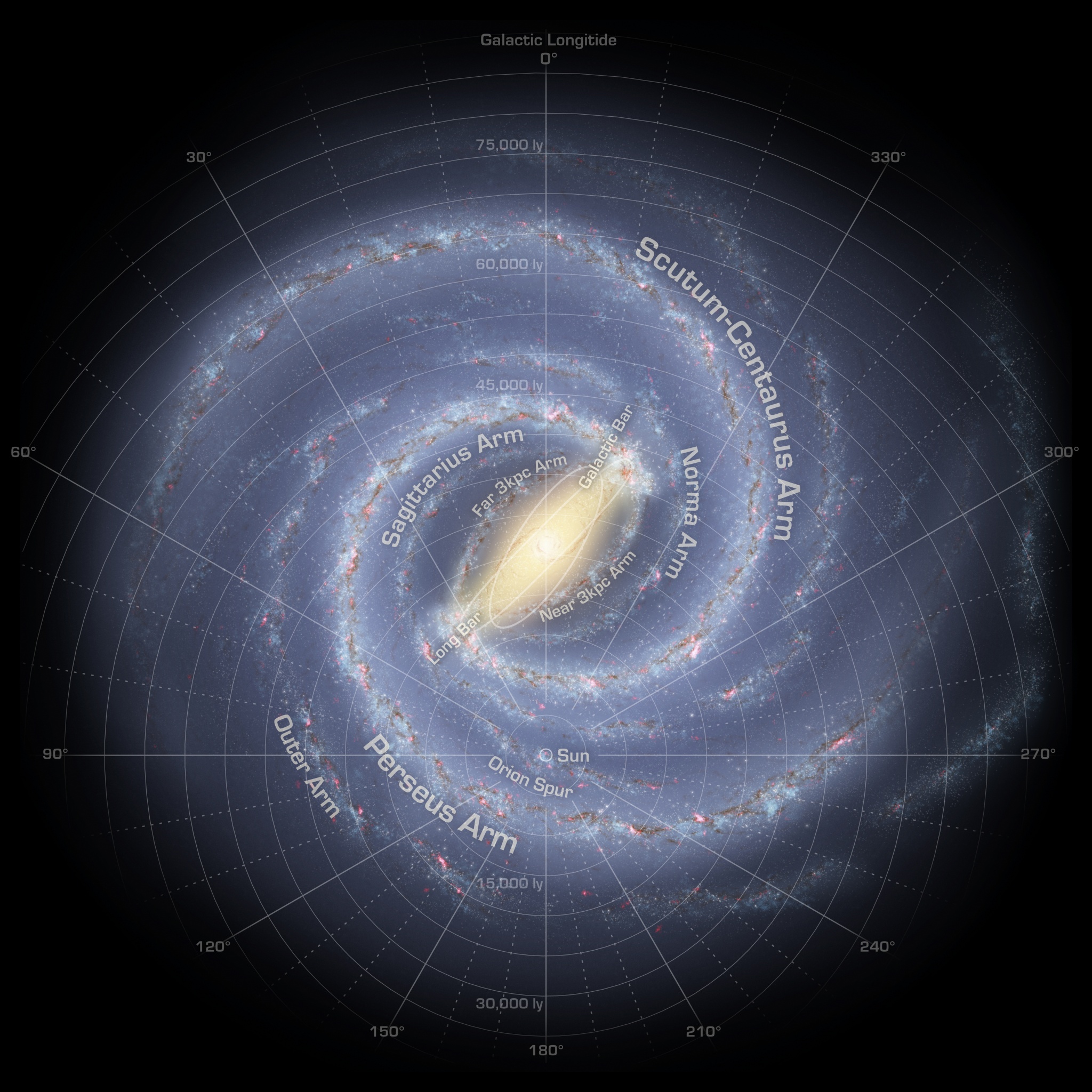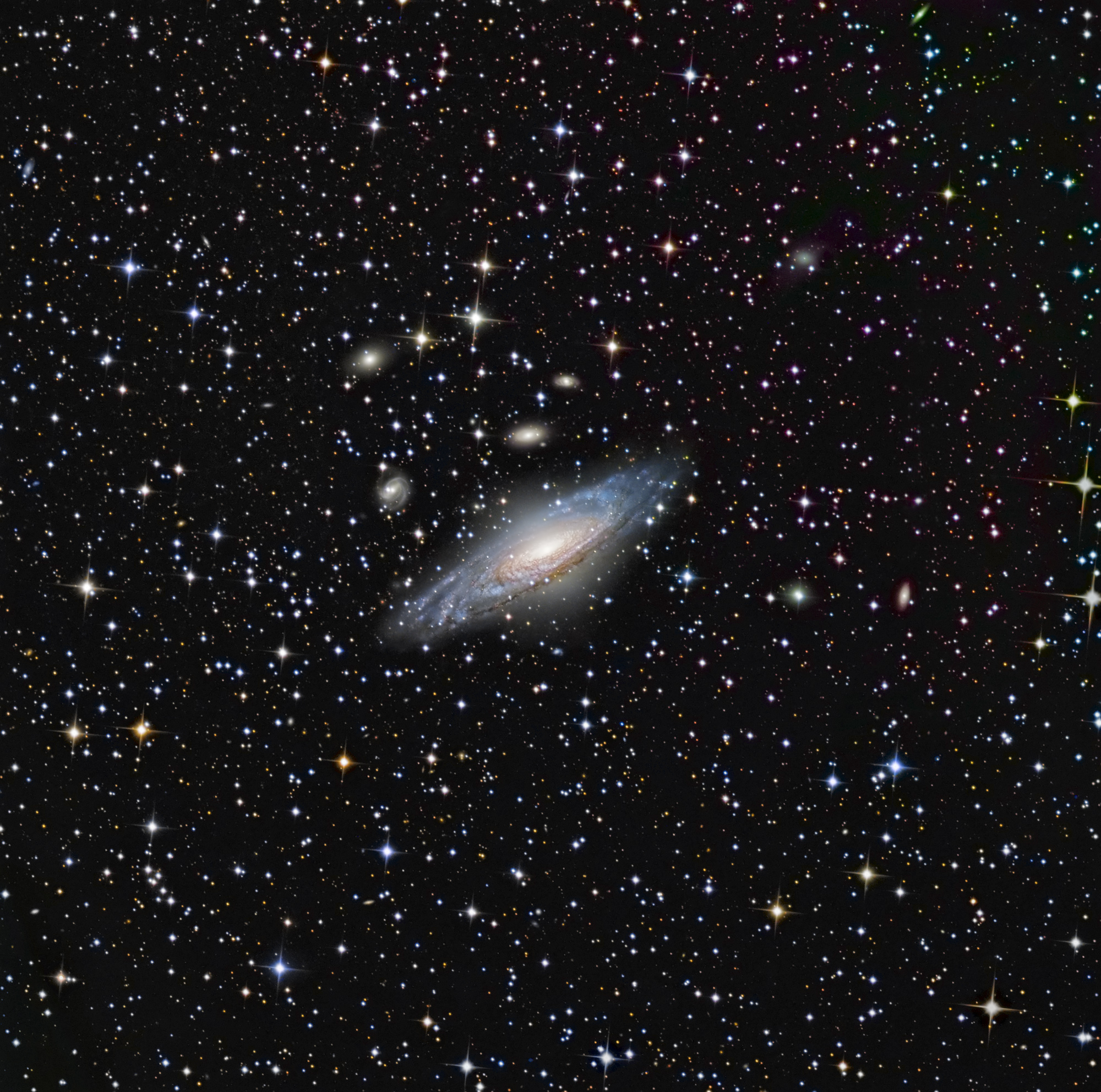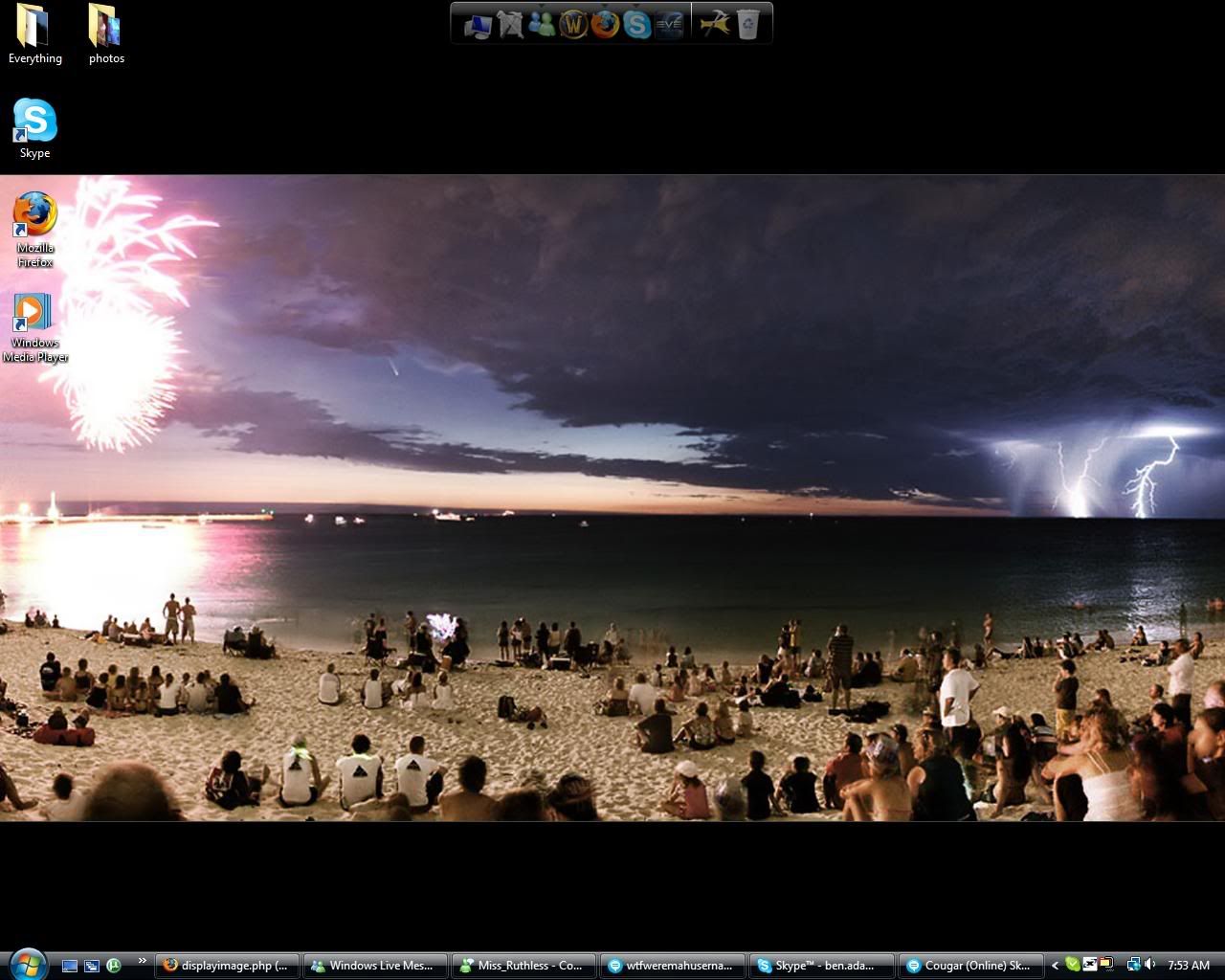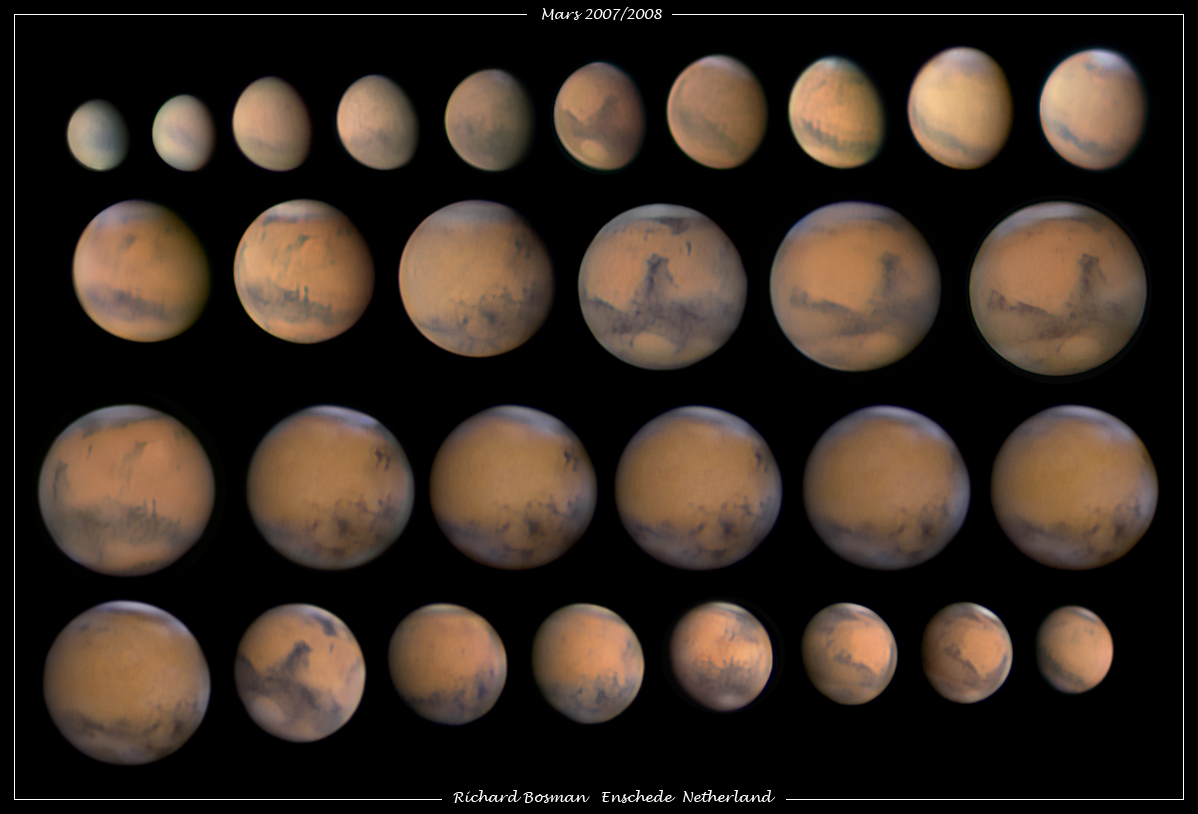Calvin and Hobbes ftw.Mek-Stizzle wrote:
holy shit fireworks, comets and lightning
that picture, is incredibly awesome
almost as awesome as a T-rex flying an F-14
http://roborant.info/images/tyran14.jpg
truly amazing picture.
The fireworks must have been good because thats what ppl are looking at. I would have looked at the comet.
The fireworks must have been good because thats what ppl are looking at. I would have looked at the comet.

Sorry that I couldn`t update this, I was on vacation. Pictures will resume tomorrow morning.
07/11/08[
Right Click > View Image for a larger picture

A major discovery was lurking in the data. By accident, while preparing a talk on the Galaxy's spiral arms for a meeting of the American Astronomical Society, Tom Dame (Harvard-Smithsonian CfA) found it - a new spiral arm in the Milky Way. The arm is labeled in this illustration as the Far 3kpc Arm, located at a distance of 3 kpc (kiloparsecs) or about 10,000 light-years from the galactic center, on the opposite side from the Sun. Along with the Near 3kpc Arm whose presence was known since the mid 1950s, the counterpart inner arms now establish that the galaxy has a simple symmetry. The arms are defined by shocked interstellar gas flowing along both sides of the Milky Way's central bar. Dame and his collaborator Patrick Thaddeus recorded the presence of both inner spiral arms in their radio data tracking emission from carbon monoxide molecules along the galactic plane. How much star formation goes on in the counterpart arms? Despite this depiction of stars and star forming regions along the arms, the last attempt to search for star formation in the Near 3kpc Arm was in 1980 and didn't turn up any. The discovery of the Far 3kpc Arm has renewed interest in this and other questions about the center of the Milky Way.
Right Click > View Image for a larger picture

A major discovery was lurking in the data. By accident, while preparing a talk on the Galaxy's spiral arms for a meeting of the American Astronomical Society, Tom Dame (Harvard-Smithsonian CfA) found it - a new spiral arm in the Milky Way. The arm is labeled in this illustration as the Far 3kpc Arm, located at a distance of 3 kpc (kiloparsecs) or about 10,000 light-years from the galactic center, on the opposite side from the Sun. Along with the Near 3kpc Arm whose presence was known since the mid 1950s, the counterpart inner arms now establish that the galaxy has a simple symmetry. The arms are defined by shocked interstellar gas flowing along both sides of the Milky Way's central bar. Dame and his collaborator Patrick Thaddeus recorded the presence of both inner spiral arms in their radio data tracking emission from carbon monoxide molecules along the galactic plane. How much star formation goes on in the counterpart arms? Despite this depiction of stars and star forming regions along the arms, the last attempt to search for star formation in the Near 3kpc Arm was in 1980 and didn't turn up any. The discovery of the Far 3kpc Arm has renewed interest in this and other questions about the center of the Milky Way.
Well that picture is just our galaxy, not the entire universe.TimmmmaaaaH wrote:
My head is starting to hurt cause I am starting on the what is the universe, purpose of life, etc line of thought.
Nice picture.
Yes Ryan I know thatRyan wrote:
Well that picture is just our galaxy, not the entire universe.TimmmmaaaaH wrote:
My head is starting to hurt cause I am starting on the what is the universe, purpose of life, etc line of thought.
Nice picture.
My name may be in reference to a mentally challenged cartoon character but I can assure you I am not.
Whenever I think about space or things related to it, those thoughts logically follow.
12/07/08
Right Click > View Image for a larger picture

Big, beautiful spiral galaxy NGC 7331 is often touted as an analog to our own Milky Way. About 50 million light-years distant in the northern constellation Pegasus, NGC 7331 was recognized early on as a spiral nebula and is actually one of the brighter galaxies not included in Charles Messier's famous 18th century catalog. Since the galaxy's disk is inclined to our line-of-sight, long telescopic exposures often result in an image that evokes a strong sense of depth. The effect is further enhanced in this well-framed view by the galaxies that lie beyond this gorgeous island universe. The background galaxies are about one tenth the apparent size of NGC 7331 and so lie roughly ten times farther away. Their strikingly close alignment on the sky with NGC 7331 occurs just by chance. The visual grouping of galaxies is also known as the Deer Lick Group.
Right Click > View Image for a larger picture

Big, beautiful spiral galaxy NGC 7331 is often touted as an analog to our own Milky Way. About 50 million light-years distant in the northern constellation Pegasus, NGC 7331 was recognized early on as a spiral nebula and is actually one of the brighter galaxies not included in Charles Messier's famous 18th century catalog. Since the galaxy's disk is inclined to our line-of-sight, long telescopic exposures often result in an image that evokes a strong sense of depth. The effect is further enhanced in this well-framed view by the galaxies that lie beyond this gorgeous island universe. The background galaxies are about one tenth the apparent size of NGC 7331 and so lie roughly ten times farther away. Their strikingly close alignment on the sky with NGC 7331 occurs just by chance. The visual grouping of galaxies is also known as the Deer Lick Group.
Last edited by Ryan (2008-07-12 14:23:06)
That one is pretty awesome.
50 MILLION years travelling at the speed of light to reach that place.
50 MILLION years travelling at the speed of light to reach that place.
Anyone who can get that puppy into a 1028x1024 wallpaper wins karma I swear to god.Ryan wrote:
07/05/08
Right Click > View Image for a larger picture
http://antwrp.gsfc.nasa.gov/apod/image/ … painen.jpg
ometimes the sky itself is the best show in town. Last January, people from Perth, Australia gathered on a local beach to watch a sky light up with delights near and far. Nearby, fireworks exploded as part of Australia Day celebrations. On the far right, lightning from a thunderstorm flashed in the distance. Near the image center, though, seen through clouds, was the most unusual sight of all: Comet McNaught. The photogenic comet was so bright that it even remained visible though the din of Earthly flashes. Comet McNaught has now returned to the outer Solar System and is now only visible with a large telescope. The above image is actually a three photograph panorama digitally processed to reduce red reflections from the exploding firework.
You mean 1280x1024?Adams_BJ wrote:
Anyone who can get that puppy into a 1028x1024 wallpaper wins karma I swear to god.Ryan wrote:
07/05/08
Right Click > View Image for a larger picture
http://antwrp.gsfc.nasa.gov/apod/image/ … painen.jpg
ometimes the sky itself is the best show in town. Last January, people from Perth, Australia gathered on a local beach to watch a sky light up with delights near and far. Nearby, fireworks exploded as part of Australia Day celebrations. On the far right, lightning from a thunderstorm flashed in the distance. Near the image center, though, seen through clouds, was the most unusual sight of all: Comet McNaught. The photogenic comet was so bright that it even remained visible though the din of Earthly flashes. Comet McNaught has now returned to the outer Solar System and is now only visible with a large telescope. The above image is actually a three photograph panorama digitally processed to reduce red reflections from the exploding firework.
Its a quarter to 8 in the morning... I haven't slept.Ryan wrote:
You mean 1280x1024?Adams_BJ wrote:
Anyone who can get that puppy into a 1028x1024 wallpaper wins karma I swear to god.Ryan wrote:
07/05/08
Right Click > View Image for a larger picture
http://antwrp.gsfc.nasa.gov/apod/image/ … painen.jpg
ometimes the sky itself is the best show in town. Last January, people from Perth, Australia gathered on a local beach to watch a sky light up with delights near and far. Nearby, fireworks exploded as part of Australia Day celebrations. On the far right, lightning from a thunderstorm flashed in the distance. Near the image center, though, seen through clouds, was the most unusual sight of all: Comet McNaught. The photogenic comet was so bright that it even remained visible though the din of Earthly flashes. Comet McNaught has now returned to the outer Solar System and is now only visible with a large telescope. The above image is actually a three photograph panorama digitally processed to reduce red reflections from the exploding firework.
Yes to answer your question
Here's the best I could do:



Do like
14/07/08
Right Click > View Image for a larger picture

Does Mars always appear the same? No. As both Earth and Mars orbit the Sun, the apparent angular size of Mars changes as viewed from the Earth. Pictured above from Enschede, Holland, Mars was captured in 2007 and 2008 with 30 separate images, all taken with the same magnification. When Earth and Mars are on opposite sides of the Sun, Mars appears relatively small. Conversely, when Earth and Mars are near each other, Mars looms large and bright. The largest Mars has appeared in recent history was the opposition of August 2003. Since Mars is always more distant from the Sun than the Earth, Mars never shows a crescent phase to Earthlings. Visible also in the above images are the north polar cap of Mars, dark and light soil, clouds, and, in the early images, a global dust storm. The next opposition, when Earth again passes near to Mars, will occur in early 2010.
Right Click > View Image for a larger picture

Does Mars always appear the same? No. As both Earth and Mars orbit the Sun, the apparent angular size of Mars changes as viewed from the Earth. Pictured above from Enschede, Holland, Mars was captured in 2007 and 2008 with 30 separate images, all taken with the same magnification. When Earth and Mars are on opposite sides of the Sun, Mars appears relatively small. Conversely, when Earth and Mars are near each other, Mars looms large and bright. The largest Mars has appeared in recent history was the opposition of August 2003. Since Mars is always more distant from the Sun than the Earth, Mars never shows a crescent phase to Earthlings. Visible also in the above images are the north polar cap of Mars, dark and light soil, clouds, and, in the early images, a global dust storm. The next opposition, when Earth again passes near to Mars, will occur in early 2010.
15/07/08
Right Click > View Image for a larger picture[/sub

[sub]This beautiful cosmic cloud is a popular stop on telescopic tours of the constellation Sagittarius. Eighteenth century cosmic tourist Charles Messier cataloged the bright nebula as M8, while modern day astronomers recognize the Lagoon Nebula as an active stellar nursery about 5,000 light-years distant, in the direction of the center of our Milky Way Galaxy. Striking details can be traced through this remarkable picture, processed to remove stars and hence better reveal the Lagoon's range of filaments of glowing hydrogen gas, dark dust clouds, and the bright, turbulent hourglass region near the image center. This color composite view was recorded under dark skies near Sydney, Australia. At the Lagoon's estimated distance, the picture spans about 50 light-years.
Right Click > View Image for a larger picture[/sub

[sub]This beautiful cosmic cloud is a popular stop on telescopic tours of the constellation Sagittarius. Eighteenth century cosmic tourist Charles Messier cataloged the bright nebula as M8, while modern day astronomers recognize the Lagoon Nebula as an active stellar nursery about 5,000 light-years distant, in the direction of the center of our Milky Way Galaxy. Striking details can be traced through this remarkable picture, processed to remove stars and hence better reveal the Lagoon's range of filaments of glowing hydrogen gas, dark dust clouds, and the bright, turbulent hourglass region near the image center. This color composite view was recorded under dark skies near Sydney, Australia. At the Lagoon's estimated distance, the picture spans about 50 light-years.
16/07/08
Right Click > View Image for a larger Picture

Recently discovered Makemake is one of the largest objects known in the outer Solar System. Pronounced MAH-kay MAH-kay, this Kuiper belt object is only slightly smaller than Pluto, orbits the Sun only slightly further out than Pluto, and appears only slightly dimmer than Pluto. Makemake, however, has an orbit much more tilted to the ecliptic plane of the planets than Pluto. Designated 2005 FY9 soon after its discovery by a team led by Mike Brown (Caltech) in 2005, the outer Solar System orb was recently renamed Makemake for the creator of humanity in the Rapa Nui mythology of Easter Island. Additionally, Makemake has been recently classified as a dwarf planet under the new subcategory plutoid, making Makemake the third cataloged plutoid after Pluto and Eris. Makemake is known to be a world somewhat red in appearance, with spectra indicating it is likely covered with frozen methane. Since no images of Makemake's surface yet exist, an artist's illustration originally meant to depict Sedna has been boldly co-opted above to now illustrate Makemake. A hypothetical moon is visualized above nearly in the direction of our distant Sun.
Right Click > View Image for a larger Picture

Recently discovered Makemake is one of the largest objects known in the outer Solar System. Pronounced MAH-kay MAH-kay, this Kuiper belt object is only slightly smaller than Pluto, orbits the Sun only slightly further out than Pluto, and appears only slightly dimmer than Pluto. Makemake, however, has an orbit much more tilted to the ecliptic plane of the planets than Pluto. Designated 2005 FY9 soon after its discovery by a team led by Mike Brown (Caltech) in 2005, the outer Solar System orb was recently renamed Makemake for the creator of humanity in the Rapa Nui mythology of Easter Island. Additionally, Makemake has been recently classified as a dwarf planet under the new subcategory plutoid, making Makemake the third cataloged plutoid after Pluto and Eris. Makemake is known to be a world somewhat red in appearance, with spectra indicating it is likely covered with frozen methane. Since no images of Makemake's surface yet exist, an artist's illustration originally meant to depict Sedna has been boldly co-opted above to now illustrate Makemake. A hypothetical moon is visualized above nearly in the direction of our distant Sun.
Apparently NASA is making snow cones on Mars now: http://news.yahoo.com/s/space/20080716/ … diceonmars
http://www.space.com/php/video/player.p … conference
http://www.space.com/php/video/player.p … conference
Xbone Stormsurgezz
mmm, mars cone!Kmarion wrote:
Apparently NASA is making snow cones on Mars now: http://news.yahoo.com/s/space/20080716/ … diceonmars
http://www.space.com/php/video/player.p … conference
rust flavored of course
17/07/08
Right Click > View Image for a larger picture

A careful look at the full field of view for this sharp image reveals a surprising number of galaxies both near and far toward the constellation Ursa Major. The most striking is clearly NGC 3718, the warped spiral galaxy right of center. NGC 3718's faint spiral arms look twisted and extended, its bright central region crossed by obscuring dust lanes. A mere 150 thousand light-years to the left is another large spiral galaxy, NGC 3729. The two are likely interacting gravitationally, accounting for the peculiar appearance of NGC 3718. While this galaxy pair lies about 52 million light-years away, the remarkable Hickson Group 56 can also be seen clustered just below NGC 3718. Hickson Group 56 consists of five interacting galaxies and lies over 400 million light-years away.
Right Click > View Image for a larger picture

A careful look at the full field of view for this sharp image reveals a surprising number of galaxies both near and far toward the constellation Ursa Major. The most striking is clearly NGC 3718, the warped spiral galaxy right of center. NGC 3718's faint spiral arms look twisted and extended, its bright central region crossed by obscuring dust lanes. A mere 150 thousand light-years to the left is another large spiral galaxy, NGC 3729. The two are likely interacting gravitationally, accounting for the peculiar appearance of NGC 3718. While this galaxy pair lies about 52 million light-years away, the remarkable Hickson Group 56 can also be seen clustered just below NGC 3718. Hickson Group 56 consists of five interacting galaxies and lies over 400 million light-years away.
18/07/08
Right Click > View Image for a larger picture

A brilliant Jupiter shares the sky with the Full Moon tonight. Since Jupiter is near opposition, literally opposite the Sun in planet Earth's sky, Jupiter will rise near sunset just like the Full Moon. Of course, opposition is also the point of closest approach, with Jupiter shining at its brightest and offering the best views for skygazers. Recorded late last month, this moving skyscape features Jupiter above the southeastern horizon and the marbled streets of the ancient port city of Ephesus, located in modern day Turkey. At the left is a temple dedicated to the Roman emperor Hadrian. The beautiful night sky also includes the arc of the northern summer Milky Way. Lights on the horizon are from the nearby town of Selçuk. Clicking on the image will download the scene as a panorama.
Right Click > View Image for a larger picture

A brilliant Jupiter shares the sky with the Full Moon tonight. Since Jupiter is near opposition, literally opposite the Sun in planet Earth's sky, Jupiter will rise near sunset just like the Full Moon. Of course, opposition is also the point of closest approach, with Jupiter shining at its brightest and offering the best views for skygazers. Recorded late last month, this moving skyscape features Jupiter above the southeastern horizon and the marbled streets of the ancient port city of Ephesus, located in modern day Turkey. At the left is a temple dedicated to the Roman emperor Hadrian. The beautiful night sky also includes the arc of the northern summer Milky Way. Lights on the horizon are from the nearby town of Selçuk. Clicking on the image will download the scene as a panorama.
19/07/08
Right Click > View Image for a larger picture

Young star cluster M16 is surrounded by natal clouds of cosmic dust and glowing gas also known as The Eagle Nebula. This beautifully detailed image of the region includes fantastic shapes made famous in well-known Hubble Space Telescope close-ups of the starforming complex. Described as elephant trunks or Pillars of Creation, dense, dusty columns rising near the center are light-years in length but are gravitationally contracting to form stars. Energetic radiation from the cluster stars erodes material near the tips, eventually exposing the embedded new stars. Extending from the upper left edge of the nebula is another dusty starforming column known as the Fairy of Eagle Nebula. M16 and the Eagle Nebula lie about 7,000 light-years away, an easy target for binoculars or small telescopes in a nebula rich part of the sky toward the split constellation Serpens Cauda (the tail of the snake).
Right Click > View Image for a larger picture

Young star cluster M16 is surrounded by natal clouds of cosmic dust and glowing gas also known as The Eagle Nebula. This beautifully detailed image of the region includes fantastic shapes made famous in well-known Hubble Space Telescope close-ups of the starforming complex. Described as elephant trunks or Pillars of Creation, dense, dusty columns rising near the center are light-years in length but are gravitationally contracting to form stars. Energetic radiation from the cluster stars erodes material near the tips, eventually exposing the embedded new stars. Extending from the upper left edge of the nebula is another dusty starforming column known as the Fairy of Eagle Nebula. M16 and the Eagle Nebula lie about 7,000 light-years away, an easy target for binoculars or small telescopes in a nebula rich part of the sky toward the split constellation Serpens Cauda (the tail of the snake).
Last edited by Ryan (2008-07-19 07:53:57)
Can somebody make that 1280x800 pleeeeeeeeease?Ryan wrote:
19/07/08
Right Click > View Image for a larger picture
http://antwrp.gsfc.nasa.gov/apod/image/ … hedler.jpg
Young star cluster M16 is surrounded by natal clouds of cosmic dust and glowing gas also known as The Eagle Nebula. This beautifully detailed image of the region includes fantastic shapes made famous in well-known Hubble Space Telescope close-ups of the starforming complex. Described as elephant trunks or Pillars of Creation, dense, dusty columns rising near the center are light-years in length but are gravitationally contracting to form stars. Energetic radiation from the cluster stars erodes material near the tips, eventually exposing the embedded new stars. Extending from the upper left edge of the nebula is another dusty starforming column known as the Fairy of Eagle Nebula. M16 and the Eagle Nebula lie about 7,000 light-years away, an easy target for binoculars or small telescopes in a nebula rich part of the sky toward the split constellation Serpens Cauda (the tail of the snake).
Last edited by eaglecorps (2008-07-19 20:49:40)
I think nasa is a pretty cool guy. eh takes pictures and doesnt afraid of anything

Merry Christmaseaglecorps wrote:
Can somebody make that 1280x800 pleeeeeeeeease?Ryan wrote:
19/07/08
Right Click > View Image for a larger picture
http://antwrp.gsfc.nasa.gov/apod/image/ … hedler.jpg
Young star cluster M16 is surrounded by natal clouds of cosmic dust and glowing gas also known as The Eagle Nebula. This beautifully detailed image of the region includes fantastic shapes made famous in well-known Hubble Space Telescope close-ups of the starforming complex. Described as elephant trunks or Pillars of Creation, dense, dusty columns rising near the center are light-years in length but are gravitationally contracting to form stars. Energetic radiation from the cluster stars erodes material near the tips, eventually exposing the embedded new stars. Extending from the upper left edge of the nebula is another dusty starforming column known as the Fairy of Eagle Nebula. M16 and the Eagle Nebula lie about 7,000 light-years away, an easy target for binoculars or small telescopes in a nebula rich part of the sky toward the split constellation Serpens Cauda (the tail of the snake).
http://img530.imageshack.us/img530/3691 … m16gy0.png
